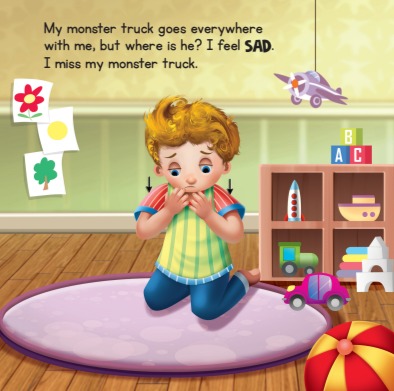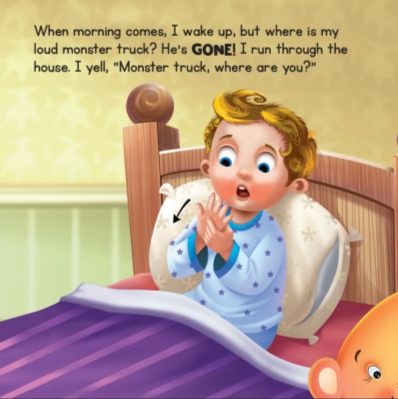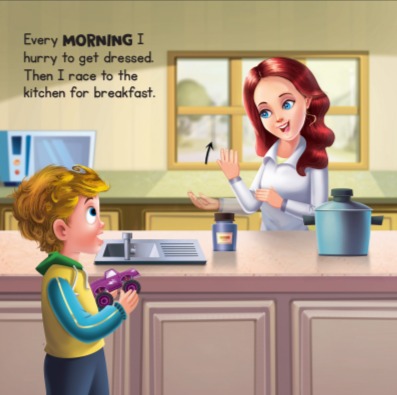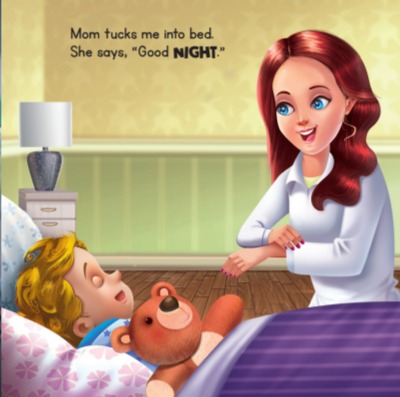Learning ASL: The Signer’s Space, Parameters, and More!
- Kathleen Marcath

- Apr 12, 2024
- 5 min read
Updated: Aug 20, 2024
American Sign Language (ASL) is a recognized language, like English, Spanish, French, or Chinese. Like any other viable language, ASL includes systems, signals, and a set of rules.

“A language is a system of relatively arbitrary symbols and grammatical signals that change across time and that members of a community share and use for several purposes: to interact with each other, to communicate their ideas, emotions, and intentions, and to transmit their culture from generations to generations.” —page 31, American Sign Language Green Books, A Teacher’s Resource Text on Grammar and Culture by Charlotte Baker-Shenk and Dennis Cokely.
Let’s explore the system and the basic guidelines for ASL. With these tools, you’ll be on your way to signing in no time!
Introduction to Signing Parameters
Sign language has signing parameters for hand shape, location, and movement. All that happens within an imaginary frame around the signer is known as the signer’s space.
Every sign in American Sign Language is made from one or more of these four parameters, along with facial expressions. All together, these five parts determine the intended communication.
Handshape: When you learn the ASL Alphabet, you learn twenty-six handshapes. For example, a closed fist represents the letter S. Holding up your last three fingers represents the letter F. When you hold up your pointer finger, the letter D is formed.
Location: Next is the location of a sign. An open five-hand shape on the signer's chin begins the sign for “Mom.” That same handshape on the signer’s forehead begins the sign for “Dad.”
Palm Orientation: Take the B handshape, in which the palm faces away from the signer toward another person; that’s the sign for “yours.” Placing the B handshape on one’s chest is the sign for “my.”
Movement: Adding movement to signs also affects their meaning. The open five-handshape tapped twice on the chin is the sign for “Mom.” Arching that handshape from the chin outward twice is the sign for “Grandma.” Letters can also have movement, such as the letters Z and J. The pinkie finger traces the letter J in the air. For Z, the index finger traces the letter Z in the air.
Facial Expression: This is also called a non-manual marker. Expressions are vital to conveying an accurate message. Notice that when signing “HAPPY” and “SAD,” the signer’s facial expression matches the meaning or feeling of the sign.
If you’ve purchased my book My Monster Truck Goes Everywhere with Me, you can use the QR code to access a video of Deaf storytellers Diana Campbell and Michelle Osterhout signing the book. Notice their expressions as they convey many different emotions throughout the story.
If you're looking to enhance your knowledge of signing parameters, I highly recommend checking out my freebies page. There, you can download an array of valuable materials that will take your understanding to the next level. Don't wait—take advantage of this opportunity today!
ASL: The Signer’s Space:
How to “Listen” to a Signer’s Hands
The signer uses a designated space to produce signs, tell a story, or even share how to fix a broken monster truck.

The space shown in the circle represents the signer’s space. The boy is holding up three fingers. In ASL, this is the “number three” or “three” sign. You will see it signed with the palm either facing the signer or away from them. Notice where the boy’s hand is—this is the space you use to fingerspell or count. Remember to hold your hand steady: bouncing makes those listening with their eyes feel dizzy.
When watching someone sign, focus on the signer’s face. Facial expressions (those non-manual markers) convey the signer’s intention. Your peripheral vision will pick up the hand movements. Avoid the tendency to focus only on the signer’s hand.

The boy in the circle is signing the number three. These specific fingers always represent “three” in ASL. Holding up your last three fingers would be the number nine, and holding up your three middle fingers would be the number six.
This signer’s space is the stage where ASL comes alive. Tell a story, share an experience, discuss philosophy, literature, football, cars, or summer vacations. Sign language can convey anything a spoken language does.
One Hand or Two
Some signs are made with one hand, some with two, and some can be signed either single-handed or double-handed.
Sign language is an inclusive form of communication, an untapped resource with limitless potential for all. Many signs, such as "SAD," "GONE," "MORNING," and "NIGHT," require the use of both hands. These four signs below, beautifully illustrated by Deaf Illustrator Isaac Liang, are featured in My Monster Truck Goes Everywhere with Me. Use the QR code found in the book to watch the video book narrated by Deaf storyteller Michelle Osterhout to embark on a journey to learn all 32 signs with variations.
Four pages from My Monster Truck Goes Everywhere with Me illustrate signs made with two hands.
Watch Michelle Osterhout, using the QR code in the book, to learn how to sign all 32 signs with variations.
In the sign for "SAD," both hands produce the same handshapes, palm orientations, and movements, while the facial expression depicts sadness.
Some signs can be made with one or two hands. Here are two examples:

A very happy “THANK YOU” in my book My Monster Truck Goes Everywhere with Me was signed using two hands. A more casual “THANK YOU ” can be signed using only one hand.
In the story, “HAPPY” is signed with one hand. The main character, a little boy, is happily holding his truck in the other hand. “Happy” is often signed with two hands to express great joy.
Classifiers: Another Aspect of ASL
A classifier is introduced on the first page of My Monster Truck Goes Everywhere with Me. Classifiers can be lots of fun, making storytelling a breeze. Classifiers visually illustrate the size, shape, location, and movement of objects or people.
Read more about classifiers in our blog ASL Classifiers for Monster Trucks, Cars, and People.
Interested in Learning More?
Click here for free downloads of ASL Picture Books supplemental pages about ASL Classifiers for monster trucks, cars, people, and other key information on the basics of American Sign Language.

We Hope you enjoyed learning about ASL classifiers for monster trucks, cars, and people.
Leave a Comment

Sources:
Baker-Shenk, Charlotte, and Dennis Cokely. 1991. American Sign Language Green Books, A Teacher’s Resource Text on Grammar and Culture. Gallaudet University Press.
“Non-Manual Signals in Sign Language.” 2016. Handspeak (blog). May 5, 2016. https://www.handspeak.com/learn/158/.
Thank you for exploring our blog!
If you enjoyed the content and would like to receive regular updates, exclusive resources, and special offers related to ASL Picture Books, I invite you to join our growing community of subscribers. By subscribing to our email list, you'll access valuable insights, interactive content, and the latest news straight to your inbox.
Catch Up With These Popular Posts!

American Sign Language is a beautiful and powerful language, an untapped resource with limitless potential.
Every child has a gift to give, and ASL can help them discover and express it.
Thank You!
ADD VIDEOS for Michelle and Diana signing Morning, GONE, or other words.
Sources
Baker-Shenk, Charlotte, and Dennis Cokely. 1991. American Sign Language Green Books, A Teacher’s Resource Text on Grammar and Culture. Gallaudet University Press.
“Non-Manual Signals in Sign Language.” 2016. Handspeak (blog). May 5, 2016. https://www.handspeak.com/learn/158/.
.jpg)









Comments